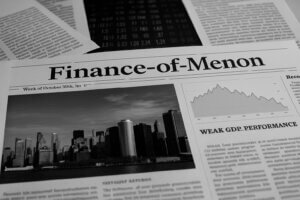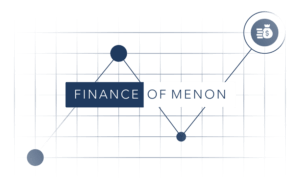Risk goes beyond just volatility. In his video series How to Think About Risk, Howard Marks, Co-Chairman and Co-Founder of Oaktree Capital Management, explores the complexities of risk management and the mindset investors should adopt. Marks highlights the need to view risk as the likelihood of loss and stresses the value of asymmetric risk-taking, where the potential rewards significantly outweigh the potential risks.
When considering risk, it’s not just about how much return a portfolio generates but about how that return was achieved. It’s a mistake to evaluate an investment purely on performance without considering the risks taken to achieve it. Legendary investors like Howard Marks and Peter Bernstein suggest that it’s crucial to approach risk thoughtfully, with an understanding that goes beyond surface-level metrics.
The Flaw with Investment Return Focus
A portfolio that delivers high returns might seem impressive at first glance. But the essential question is: How much risk was taken to get that return?
Consider two managers. Manager A delivers a 10% return, and Manager B delivers a 15% return. Is Manager B inherently better? Not necessarily. What matters is understanding the risk each manager took to achieve these returns. Howard often emphasizes, risk management isn’t just about achieving high returns; it’s about protecting against losses and preserving capital during downturns.
Manager A: Mimicking the Market
Imagine a scenario where the market rises by 10%, and a manager’s portfolio also goes up by 10%. However, when the market falls by 10%, the portfolio falls by the same amount. In this case, the manager has effectively done nothing special. They’ve tracked the market, and you could have achieved the same result by simply investing in an index fund. Net of managers fees, you likely lost money in this scenario.
This isn’t risk management; it’s passivity. There’s no skill involved in riding the market waves without mitigating the downside – Howard Marks
Manager B: Aggressiveness Over Skill
In another scenario, the market is up 10%, but the portfolio rises by 20%. On the flip side, when the market drops by 10%, the portfolio falls by 20%. At first glance, this manager might appear to be more skilled because they outperform the market during upswings. But a closer look reveals that this is not necessarily skill—it’s just aggressiveness – taking more risk.
This portfolio carries a higher level of risk, as it swings more violently than the market in both directions. High returns in up markets don’t necessarily indicate skill if the downside exposure is equally amplified. In essence, it’s a high-risk, high-reward approach, with no real risk management in play. This can be rewarding only if aligned well with individual risk profile, time horizon and personal goals.
Manager C: True Skill in Risk Management
Now consider a third scenario. The market is up 10%, but the portfolio gains by 12%. However, when the market falls by 20%, the portfolio is only down 15%. This is where true risk management shines. This manager isn’t focused on chasing the highest returns in bull markets; they’re focused on limiting losses in bear markets.
As Peter Bernstein wisely pointed out, real trouble comes from the unexpected—the things outside of two standard deviations that we often don’t prepare for. A manager who can contain downside risk, even if they don’t always beat the market on the upside, demonstrates true risk management skill.
Risk Is More Than Volatility
Too often, academics and investors focus on volatility as the measure of risk. Volatility is easy to quantify, and it fits neatly into investment models. But volatility is just an indicator—it’s not risk itself.
In the real world, risk is the probability of loss. Investors want compensation for bearing risk, and the true risk lies in the possibility of permanent loss of capital.
So, is risk quantifiable in advance? Not entirely. As Howard Marks argues, risk is more a matter of opinion than a precise, quantifiable measure. You may buy an asset for $1 and sell it for $2, but was that luck, or was it a calculated risk that paid off?
Forms of Risk: It’s More Than Just Permanent Capital Loss
Risk isn’t just about the chance of losing money. There are many forms of risk, and some are more subtle but equally important. For example, the risk of missing opportunities is often overlooked. Not taking enough risk can itself be a form of risk.
Similarly, liquidity risk can be a significant risk factor. If you’re unable to hold onto an investment during a downturn, not because of investment performance or a change in your investment thesis, but due to a lack of liquidity during times of crisis, like a job loss or a temporary setback due to health, that’s a real risk. Being forced to sell at the wrong time can turn temporary volatility into permanent loss.
The Unknown and Unknowable
At the end of the day, risk often comes from things we don’t know—or think we know but underestimate. As Bernstein said, the real danger comes from the unexpected, the events that happen outside the range of normal expectations. These are the risks that can’t be neatly captured by models or projections.
A good risk manager recognizes that markets are unpredictable, and the range of possible outcomes is wider than we often assume. The key is to build a portfolio that can withstand a variety of scenarios, especially the ones we didn’t see coming.
Thinking About Risk, Not Just Returns
To truly understand risk, we need to stop focusing solely on returns. The goal isn’t just to achieve the highest possible return but to do so in a way that manages and limits risk. Whether through limiting downside exposure, being cautious in volatile times, or simply recognizing the range of possible outcomes, effective risk management is about thinking deeply about what could go wrong—and being prepared for it.
Predicting the rain doesn’t count, building the ark does
– Warren Buffet
By taking this approach, you can think about risk in a more holistic way and avoid the common traps that come from chasing returns without understanding the full picture of risk. Interested in learning more about how we think about risk when creating investment portfolios for clients? Book a session with Shabrish to learn more.
Disclaimer: This content is for informational purposes only and should not be considered investment advice. All investments carry risks, including the loss of principal. Finomenon Investments LLC cannot guarantee future results
Image Credit: Images used are not created by Finomenon Investments, please share the source and author of the illustrator if you know to help give them credit






